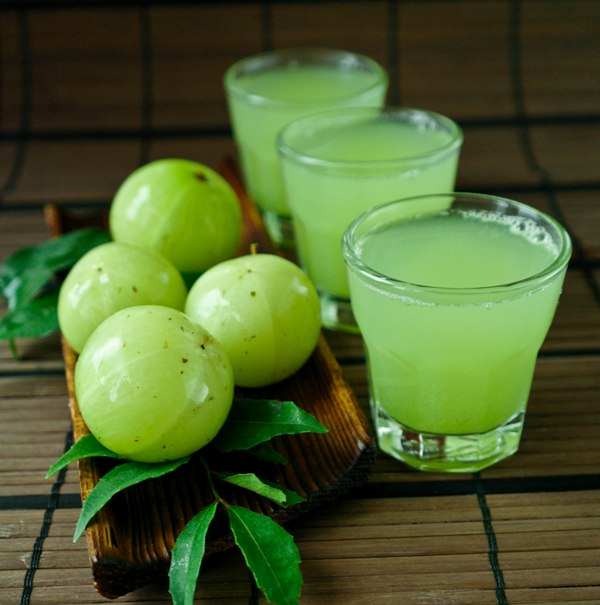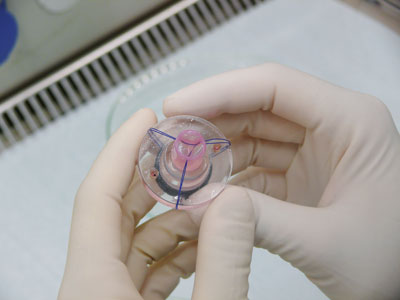
Amla or Indian gooseberry is popular since decades due to its nutritional benefits. In India, this fruit is used in making pickles, chutneys, jams and murabbas. Amla juice is a healthy drink as it is a storehouse of vitamin C and other nutrients which provide an array of health and beauty benefits. Amla fruit is greatly renowned and amla juice is also used in Ayurvedic medicine.
It is regarded as the juice of immortality or the magic potion which keeps you young and fit. Drinking amla juice twice a day can do wonders for your body and skin. It not only improves the appearance of your skin but also helps maintain proper body functions. It also makes your hair grow stronger.
Amla juice is a great drink to recharge your energy for the rest of the day. Being a storehouse of vitamin C and minerals like iron, it can prevent various diseases and improves your health. Regular intake of this juice provides you the following health benefits.
1. Relieves Asthma And Bronchitis:
Drinking amla juice with honey twice daily can relieve asthma and bronchitis complications. It also reduces the incidence of chronic cough, allergic asthma and tuberculosis.
2. Burns Fat:
Amla juice can cure obesity by increasing protein levels which in turn helps in reducing unwanted fat. It has the ability to create a positive nitrogen balance. It reduces the cholesterol levels, thus minimizing the risk of heart attacks.
3. Relieves Constipation And Piles:
Amla juice helps in relieving constipation caused due to piles. It also regulates the bowel movements and cures chronic constipation.
4. Treatment of Gastric Disorders:
Amla juice is great treatment for gastric disorders and hyperchlorhydria (burning sensation in abdomen).It is a good remedy for diarrhea and dysentery. Besides piles and constipation, it helps maintain healthy liver functions. Amla juice is effective in treating peptic ulcers and acidity. If you have acidity problems, you can take amla juice with pure ghee everyday twice a day. Read Also http://www.texilaconnect.com/ayurvedic-remedies-for-hair-loss/
5. Blood Purifier:
Amla juice acts as a blood purifier by flushing out toxins from the body. Regular intake of this juice purifies your blood as well as helps increase hemoglobin and red blood cell counts.
6. Eye Health:
Regular intake of amla juice helps in improving eyesight and nearsightedness as well as controls the onset of cataracts. It also minimizes intraocular tension. It counters problems like reddening, itching and watering of eyes.
7. Beneficial For Heart:
Amla juice is considered a great remedy for heart problems as it makes the heart muscles strong, thus enabling the heart to pump blood easily.
8. Controls Diabetes:
Amla juice taken with turmeric powder and honey helps in controlling diabetes.
9. Cooling Agent:
Amla juice contains 20 times more vitamin C than orange juice. This vitamin improves the tannins that are required to shield heat and light. During summer season, this juice keeps your skin cool by sorting out heat from the body. It also acts as a shield against radiation by protecting you against the harmful UV rays.
10. Soothes Inflammation:
The anti-inflammatory properties in amla juice help in reducing the swelling in the joints caused by arthritis. By reducing inflammation, it also protects and eases the tissues of the digestive tract.
11. Oral Health:
Daily intake of amla juice wards off bad breath and strengthens teeth. Gargling with a mixture of water and amla juice can provide relief from painful mouth ulcers.
12. Treatment of Insomnia:
Amla juice is effective in curing insomnia. All you need to do is take fresh amla juice with a mixture of coarse powder of nutmeg; and experience a sound and peaceful sleep.
13. Prevents Cancer:
Amla juice is rich in antioxidants, particularly superoxide dismutase (SOD), which protect against the formation of free radicals. Thus, regular intake of this juice helps in preventing cancer.
14. Bone Health:
Regular consumption of amla juice lowers the osteoclasts, the cells that are responsible for breaking down the bones.
15. Other Benefits:
Amla juice comprises of many minerals and vitamins such as carotene, phosphorus, calcium, iron and vitamin B complex; and hence, is a powerful antioxidant. It protects against oxidative stress by eliminating free radicals. It fortifies our liver, strengthens your lung, nourishes your brain, improves muscle tone, improves your urinary system and balances stomach acids. In fact, according to Ayurveda, regular consumption of amla juice promotes longevity.
Benefits Of Amla Juice For Skin
Amla juice works wonders for your skin as it is loaded with vitamin C and other antioxidants. Some of the benefits of amla juice for skin are as follows.
16. Lightens Complexion:
The antioxidants and vitamin C present in amla juice brighten your skin and impart a natural glow to it. Drinking amla juice with the addition of honey or applying it as a face pack is great for making your complexion lighter and brighter. It also keeps your skin free from blemishes.
17. Anti-ageing Benefits:
Amla juice helps to maintain the youthful look of your skin as it contains a lot of antioxidants. Vitamin C, in particular, acts to keep your skin young for a longer time. Thus, regular intake of amla juice delays the effects of premature ageing such as fine lines and wrinkles, dark spots etc.
18. Treatment of Pigmentation:
One of the benefits of drinking amla juice regularly is that it provides you with a glowing and flawless skin. It brightens your skin and reduces pigmentation. You can also apply amla juice on your face with a cotton wool and rinse off after a few minutes. Keep your eyes shut while doing so. Doing this regularly will lighten the marks and pigmentation.
19. Tones and Tightens Skin:
Decrease in the skin collagen causes your skin tissue to lose its firmness and softness, resulting in sagging skin. As stated earlier, amla juice is rich in vitamin C which boosts the production of collagen cells in the skin, thus making your skin soft, supple and youthful as well as tones and tightens your skin.
20. Treatment of Acne and Pimples:
Amla juice is perfect for the treatment of acne and pimple scars. Applying a paste made from amla for 10 to 15 minutes will heal the spots as well as decrease the acne and pimples. Moreover, since it is a natural blood purifier, it fights the microorganisms in the skin, thus keeping skin infections as well as acne and pimples at bay. Hence, drinking amla juice on a regular basis helps to keep your skin clear and flawless.
21. Exfoliates And Cleanses Skin:
Amla juice is an excellent cleanser whether ingested or applied topically. Being a mild exfoliant, it helps in removing the dead skin cells. If your skin is sensitive, you can dilute it with some water before applying.
22. Repairs Damaged Tissues:
Amla juice has good healing properties due to the presence of vitamin C and other antioxidants which can speed up the damaged tissue repair, thus providing you with a healthy and clear skin. It also combats the problem of dry and scaly skin.
Amla Juice Benefits For Hair
Amla has been considered as a hair tonic and so amla juice also plays an important role in making your hair healthier and stronger. It is an effective natural remedy for several hair problems. Some of its benefits in hair care are as follows.
23. Strengthens Hair:
Amla juice strengthens your hair follicles, thus encouraging hair growth. You can apply a mixture of amla and lemon juice on your scalp and leave it for 20 to 30 minutes. Rinse off with warm water. This will strengthen your hair from roots and make it shinier.
24. Prevents Premature Graying:
Amla juice is very beneficial for those suffering from premature graying of hair. This is because it is rich in antioxidants and vitamin C which prevent premature graying of hair.
25. Treatment of Dandruff:
Dandruff is a common problem these days and having amla juice is an effective way of getting rid of it. Regular consumption of this juice prevents accumulation of dandruff on your scalp.
26. Improves Pigmentation:
Amla juice helps to improve pigmentation and color of hair and makes it darker and thicker. It is used as an effective ingredient in hair dyes and other hair care products. It is great for the treatment of hair discoloration and graying hair.
27. Good Conditioner:
Amla juice acts as a great conditioner for dry and rough hair. You can mix some amla juice with henna and apply it on your hair. This will counteract the drying nature of henna, thus providing you with healthy and conditioned hair. You can also use it as a hair wash to add extra shine and bounce.
28. Scalp Cleanser:
You can mix amla juice with an egg, beat it and massage your hair with it. Amla juice will mask the smell of eggs and provide you with shiny, silky and squeaky clean nourished scalp.
29. Prevents Hair Problems:
Besides strengthening your hair, regular consumption of amla juice helps to deal with several hair problems like hair loss, split ends and frizzy hair.
Hence amla juice offers countless benefits for your skin, hair and health by enriching your body with vital nutrients. It deserves to be incorporated in your diet and can be a healthy alternative for various dietary supplements sans the negative effects.
Source: style craze












